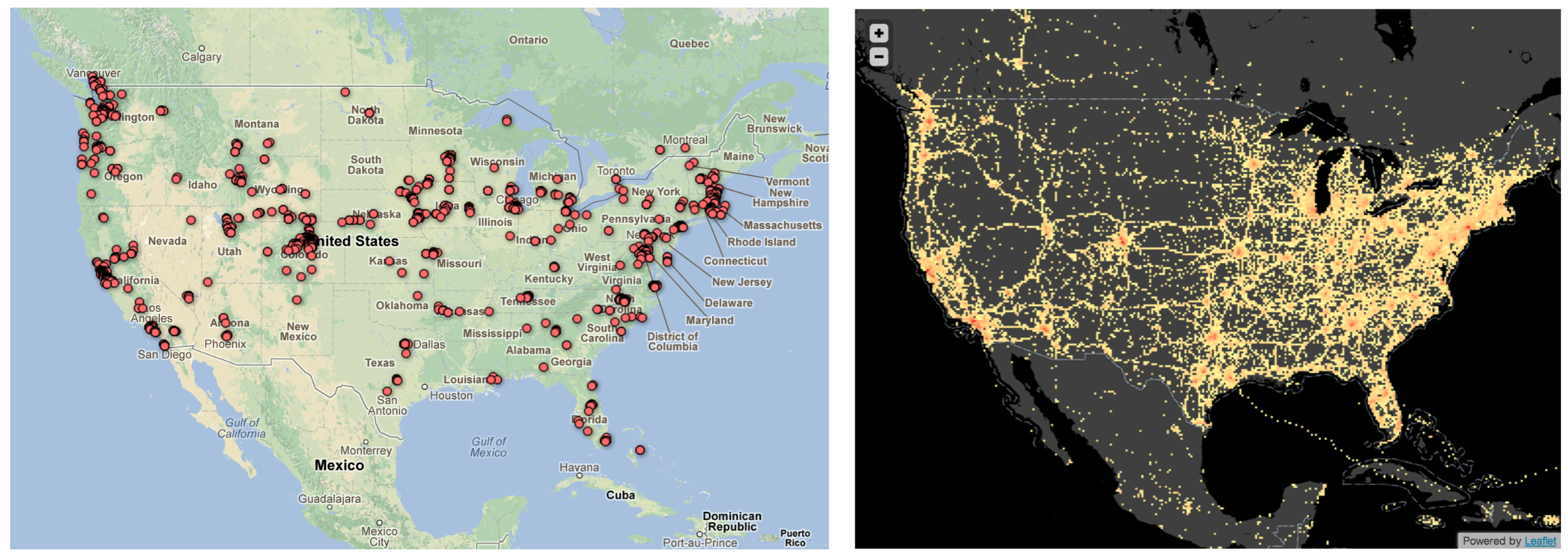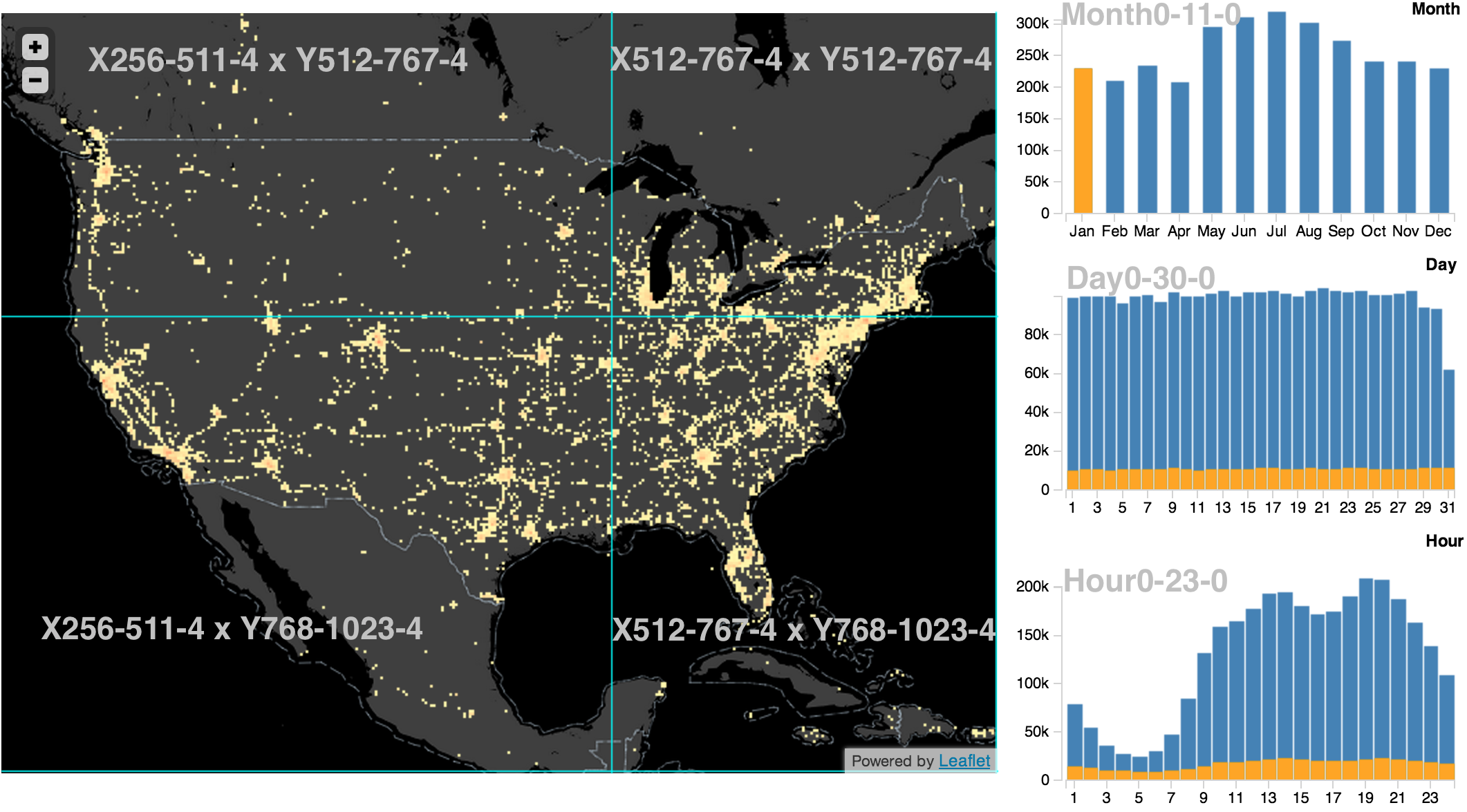

with Biye Jiang and Jeffrey Heer
Data analysts must make sense of increasingly large data sets, sometimes with billions or more records. imMens is a system designed to support interactive visual exploration of large data sets. The scalable visual representations are based on binned aggregation and support a variety of data types: ordinal, numeric, temporal and geographic.

To achieve interactive querying (e.g., brushing and linking) between the visualizations, imMens precomputes multivariate data projections and store these as data tiles. The browser-based front-end dynamically loads appropriate data tiles and uses WebGL for data processing and rendering. In benchmarks imMens sustains 50 frames-per-second brushing & linking among dozens of visualizations, with invariant performance on data sizes ranging from thousands to billions of records.

The effects of interactive latency on exploratory visual analysis
PDF (InfoVis 2014)